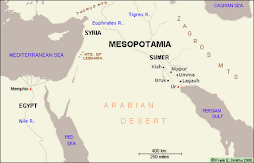- The historical centre and the business district-La plaza santa Maria, la plaza de la madera, la Mota
- The main residencial areas- urbanizacion de el Tejar, Las Catalanas, el Pinar.
- the industrial areas-El centro de transportes, es donde se encuentran todas las fabricas y donde se realizan los envios.
- the main streets- Calle Herreros, Calle la Rua, Avenida Maragatos, Avenida de el Ferial, Calle los Carros.
 -Where did the gipsy people come from? The gipsies come from the India
-Where did the gipsy people come from? The gipsies come from the India
-How many gypsies are there in the world?
No one knows exactly how many Gypsies there are, either in general or in Spain in particular
-How many gipsies are there in Spain?
Estimates of the Spanish Gypsy population range as low as 500,000 and as high as 700,000.
-What language do they speak in Spain?
speak a language known as Romany
-What do you think the gipsies are excluded from the society?
I think that we should not treat them badly, we must all be united, even if it is true that sometimes behave in a manner not usual with us, makes us think differently about them.
-Are social integrartion programmes necesary? Why?, Why not?
yes, because sometimes they do not behave well with the Spanish, they think they are everything, and that are most important, I think what they had to do was some laws are not met, they are punished.
Hunting and Gathering societies
His time was in the Neolitic, the lifestyle was the Males probably traveled long distances to hunt and capture larger animals. Females hunted smaller animals, gathered plants, made clothing, protected and raised children, and helped the males to protect the community from rival groups. And special features were Hunting and gathering societies primarily survive by hunting animals, fishing, and gathering plants. The vast majority of these societies existed in the past, with only a few (perhaps a million people total) living today on the verge of extinction.
Pastoral societies
Members of pastoral societies, which first emerged 12,000 years ago, pasture animals for food and transportation. Pastoral societies still exist today, primarily in the desert lands of North Africa where horticulture and manufacturing are not possible.  Su estilo de vida era el trabajo pastoril.
Su estilo de vida era el trabajo pastoril.
Horticultural societies
Unlike pastoral societies that rely on domesticating animals, horticultural societies rely on cultivating fruits, vegetables, and plants. These societies first appeared in different parts of the planet about the same time as pastoral societies.Agricultural societies
Agricultural societies use technological advances to cultivate crops (especially grains like wheat, rice, corn, and barley) over a large area. Sociologists use the phrase Agricultural Revolution to refer to the technological changes that occurred as long as 8,500 years ago that led to cultivating crops and raising farm animals. Increases in food supplies then led to larger populations than in earlier communities.
Feudal societies
From the 9th to 15th centuries, feudalism was a form of society based on ownership of land. Unlike today's farmers, vassals under feudalism were bound to cultivating their lord's land. In exchange for military protection, the lords exploited the peasants into providing food, crops, crafts, homage, and other services to the owner of the land. The caste system of feudalism was often multigenerational; the families of peasants may have cultivated their lord's land for generations.
Industrial societies
Industrial societies are based on using machines (particularly fuel-driven ones) to produce goods. Sociologists refer to the period during the 18th century when the production of goods in mechanized factories began as the Industrial Revolution. The Industrial Revolution appeared first in Britain, and then quickly spread to the rest of the world.
Postindustrial societies
postindustrial society based on information, knowledge, and the selling of services. That is, rather than being driven by the factory production of goods, society is being shaped by the human mind, aided by computer technology. Although factories will always exist, the key to wealth and power seems to lie in the ability to generate, store, manipulate, and sell information.
1. ¿Qué tipos de sociedades hay?
Hay tres tipos principales de sociedades: rural, industrial y post industriales.
Sociedades Rurales
En las sociedades rurales, la agricultura, y la explotación de los recursos minerales y energéticos son la base de la economía. Hay muy pocas industrias tradicionales como la manufactura textil. Muchas personas trabajan en el sector servicios, en pequeñas empresas. Muchas personas viven en pueblos, donde hay lazos tradicionales y costumbres, que siguen siendo fuertes. Hay muchas sociedades rurales en África, Asia y en Latin América.
Sociedades industriales
Mas de un tercio de la fuerza laboral trabaja en la industria. Las fabricas usuales no son modernas, y la producción se encuentra en los sectores tradicionales, como el metal, el hierro, textiles y medicamentos. Hay pequeñas granjas, pero un fuerte sector de servicio, particularmente en el transporte, comunicaciones y comercio. Muchas personas abandonan las regiones rurales y marchan a vivir a las ciudades. Hay sociedades industriales en el este y en el centro de Europa, y en los países industrializados en Latin América y en el Sur-Este de Asia.
Sociedades postindustriales
Más del 60% de la población trabaja en una variedad de el nivel alto de los servicios, como los servicios financieros y corporaciones, y la información tecnológica. Un 30% de la población trabaja en la industria. Un 10% de la población trabaja en la agricultura. Sin embargo, la producción se esta incrementando, gracias a las máquinas modernas y otros avances tecnológicos. Estas sociedades urbanas. En el pasado, las personas emigraban del país a las ciudades. Ahora, sin embargo, las personas se mueven fuera de las ciudades para encontrar trabajo. Las ciudades postindustriales se encuentran en los pasíses desarrollados, como los Estados Unidos, Canadá, el Oéste de Europa y Japón.






